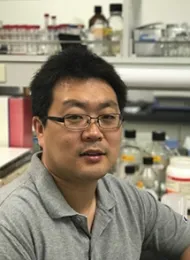Parkinson's Disease Research: Paper of the Month


The paper, which indicates that a brain enzyme could play a key role in curbing or preventing the progression of Parkinson's disease, is one of four singled out as exemplary on the NIEHS website.
“This could be a “revolutionary paper that could cure Parkinson's disease,” commented co-author Bruce Hammock, a UC Davis distinguished professor of entomology with a joint appointment with the UC Davis Comprehensive Cancer Center. He is the 30-year director of the UC Davis NIEHS Superfund Program, which helped fund the research. "A related compound to the drug used in the paper will enter human safety trials sponsored by NIH in early 2019."

The team of 14 scientists demonstrated that inhibiting the enzyme soluble epoxide hydrolase (sEH) compound in mice helped curb the inflammation associated with the development and progression of Parkinson's disease (PD), an age-related brain disorder that affects a million Americans, mostly 60 and over.
The researchers exposed mice to methyl-4-phenyl-1, 2, 3, 6 tetrahydropyridine (MPTP), a neurotoxicant that leads to symptoms of PD in animals. They found two approaches that protected against MPTP-induced neurotoxicity in the mouse brain--adding a potent sEH inhibitor, and genetically modifying mice to not produce sEH.
“Our research suggests that the sEH inhibitor may prevent the progression of Parkinson's disease (PD) as well as treat patients with dementia of Lewy bodies (DLB) if the sEH inhibitor is used in early phases of patients with these disorders,” said Hashimoto, whose career spans 30 years in the development of blood biomarkers and novel therapeutic drugs and includes more than 550 publications on the topic. “Both PD and DLB are chronic and progressive movement disorders. However, the precise causes of these diseases are largely unknown.” Lead author was Qian Ren of the Hashimoto lab.
Hammock and a colleague Sarjeet Gill (now of UC Riverside) discovered the sEH enzyme in a UC Berkeley lab while they were researching insect developmental biology and green insecticides. The work, begun in 1969, led to the discovery that many regulatory molecules are controlled as much by degradation as by biosynthesis, Hammock said. These epoxy fatty acid chemical mediators control blood pressure, fibrosis, immunity, tissue growth, and pain and inflammation.
The Hammock laboratory has published nearly 900 peer-reviewed papers on the sEH enzyme. To date, journals have published more than 17,000 peer-reviewed papers on the sEH enzyme and its inhibitors. Hammock credits the NIEHS with supporting his research in this area since the 1970s.
A Davis-based company, EicOsis, is developing inhibitors to sEH to treat unmet medical needs in humans and animals. The company recently received a multi-million dollar grant from the NIH/NINDS Blueprint Program to move sEH inhibitors through phase I human clinical trials. "We are developing a non-opiate analgesic to treat the chronic pain often associated with diabetes,” said William Schmidt, vice president of clinical development at EicOsis. “Once we have investigational new drug status from the Food and Drug Administration and have finished our phase I trial, physicians will be able initiate their own trials with the EicOsis compound on Parkinson's disease and other Lewy body disorders.”
Hammock said the soluble epoxide hydrolase inhibitors that inhibit the soluble epoxide hydrolase will soon enter human clinical trials supported by the NIH-NINDS Blueprint Program (NIH's Health's National Institute of Neurological Disorders and Stroke). “These drugs could provide relief for patients with a wide variety of inflammatory diseases,” said Hammock, who is a member of the National Academy of Sciences and the National Academy of Inventors.
Resources:
- See initial news story on UC Davis Department of Entomology and Nematology website
- See PNAS paper
